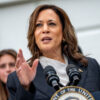With so much attention fixed on soaring prices for gasoline and groceries, one can almost overlook the fact that we’re also enduring an affordable housing crisis. The question is, why?
Spanning the pandemic era from February 2020 through May 2022, home prices soared 43.5%. Over the past 12 months, home prices are up 19.7%, while residential property prices in the United States, adjusted for inflation, are now 6.7% above the prior all-time record levels of the 2006 bubble.
Home prices are increasing far greater than family income growth is. The home price-to-median income ratio now stands at more than 8.1, significantly higher than the levels of well under 5.0 experienced from 1980 to 2000. The mortgage payment-to-income ratio hit 42% in May—tied for the highest level since the creation of the index in 2006.
The mortgage payment on a median-priced home with a 20% down payment jumped from under $1,300 to more than $2,000 in just the past year as interest rates and home prices surged—a whopping 56% increase.
Median apartment rental costs, meanwhile, have jumped 12% this past year. Because leases often roll over annually, the consumer price index data from the Bureau of Labor Statistics does not yet fully reflect this surge. Since March 2020, numerous cities experienced rent increases well over 30%.
So what’s to blame for these surging prices? Politicians are scapegoating “institutional owners” and other investors in rental properties. But the evidence doesn’t support this. According to mortgage giant Freddie Mac, “Overall investor share of home sales stands at 27.6% in December 2021, which is only slightly higher than 26.7% in 2019.”
Large investors (10 or more homes) account for only 6% of all home purchases. The proportion of home sales to investors is actually smaller today than in 2006.
CoreLogic reports that from 1999-2018, “mom and pop” investors actually accounted for a growing portion of the homes purchased relative to private equity investors. Although the share of sales to institutional investors (pension funds, insurance companies, banks) and iBuyers (large corporate buyers that often remodel and flip) rose from under 2% in 2018 to 4% of home sales since 2021, this is still only a small portion of all rental homes purchased.
Institutional investors own just two out of every 1,000 (0.21%) of all residential real estate, and just 1% of all single-family rental homes nationwide. Over the past five years, rental housing as a share of total housing declined.
Far from leading the surge in home prices, both institutional and smaller investors are alleviating the affordable housing shortage. And by often paying below list price—29.4% less, according to a recent RealtyTrac report—institutional investors may actually be a counterweight to home price appreciation.
So who are the main culprits? Government mortgage subsidies, the Federal Reserve, and local regulations.
Government-sponsored enterprises—namely, Fannie Mae and Freddie Mac—continue to dominate the mortgage market. Investors who purchase GSE bonds and mortgage-backed securities ultimately provide funds for people to finance homes, and these bondholders and MBS investors enjoy implicit government backing.
Approximately 90% of GSE volume is currently devoted to refinances, investor purchases, lower loan-to-value loans, and pricier homes purchased by higher-income earners. Government-subsidized GSEs enable borrowers to take on bigger loans and spur housing demand, leading to higher home prices and increased taxpayer risk.
Since March 2020, the Federal Reserve has driven down mortgage interest rates and fueled a rise in housing costs by purchasing $1.3 trillion of mortgage-backed securities from Fannie Mae, Freddie Mac, and Ginnie Mae. The $2.7 trillion the Federal Reserve now owns is nearly double the levels of March 2020. Artificially increasing the amount of capital available for the residential home mortgage market and distorting interest rates has exacerbated home unaffordability.
On the local level, stringent zoning restrictions, density limitations, and aggressive environmental regulation limit the supply of housing while increasing the costs of construction. Regulations often account for more than 30% of the costs of rental housing construction.
Rent control further compounds the problem by deterring new construction, giving landlords fewer incentives to spend on upkeep and remodeling, and reducing the future supply of housing. New construction the past decade remains far lower than in the decade preceding the prior housing price bubble in part because of these restrictions.
Blaming real estate investors for the resulting misery may score political points. But demagoguery does nothing to alleviate it.
Lawmakers can start to restore this bedrock of the American dream by removing federal subsidies from the housing market, restricting the Federal Reserve’s power to purchase a limitless quantity of mortgages, and eliminating the artificial barriers to housing supply erected by local leaders. It’s time to stop home prices from going through the roof.
Have an opinion about this article? To sound off, please email letters@DailySignal.com and we’ll consider publishing your edited remarks in our regular “We Hear You” feature. Remember to include the url or headline of the article plus your name and town and/or state.

























